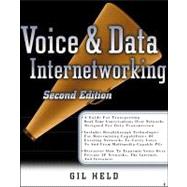-- Networking expert Gil Held shows network managers techniques that can be used to transport real-time voice conversations over networks designed for data transmission.
-- Not just theory - Application notes in each chapter show how to implement the technology, such as how to route call center calls over an IP gateway.
-- New cutting edge material on Voice over IP Gateways and QoS (Quality of Service) including why its needed, and how it can be obtained.
-- In depth explanation of how to transmit voice over private IP networks, the Internet, and Intranets.








